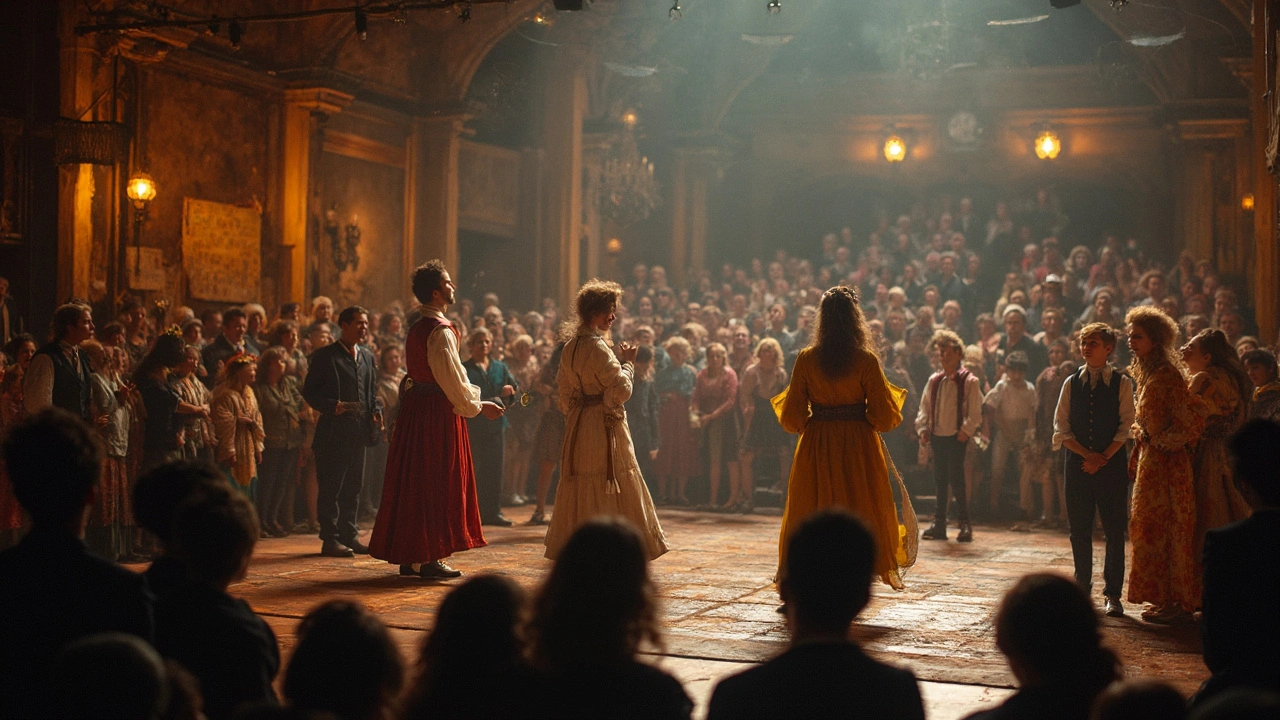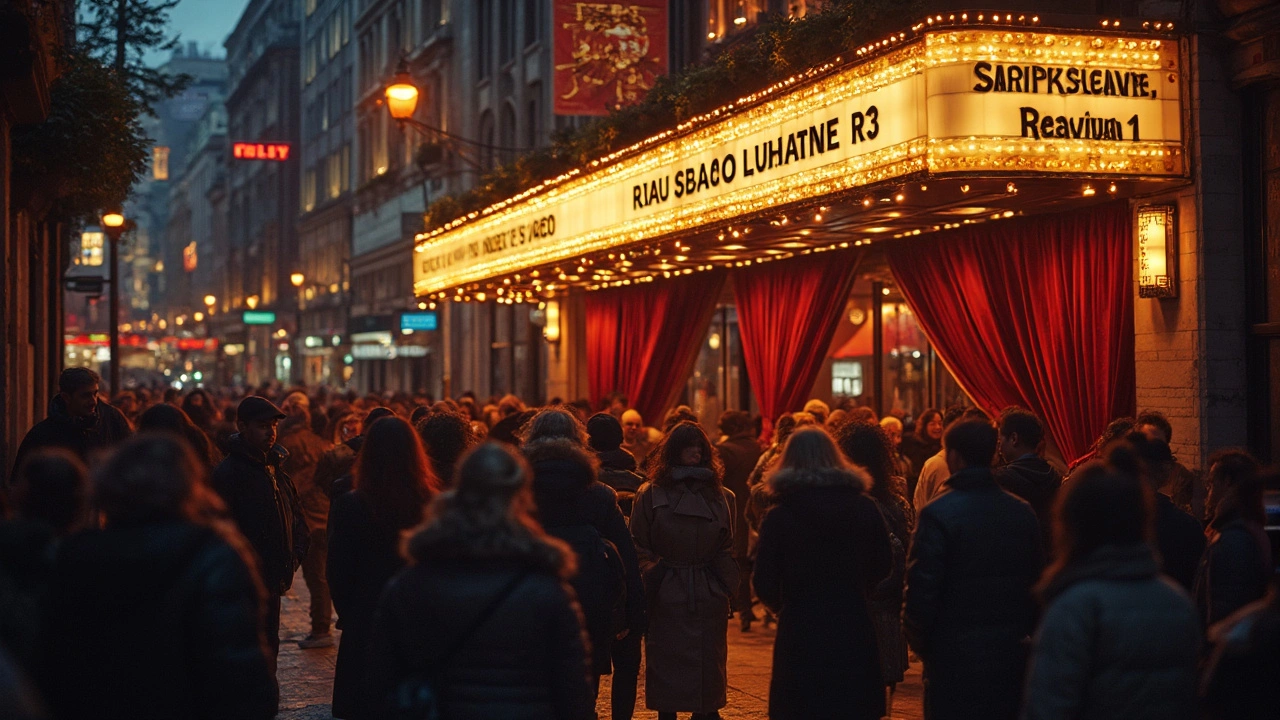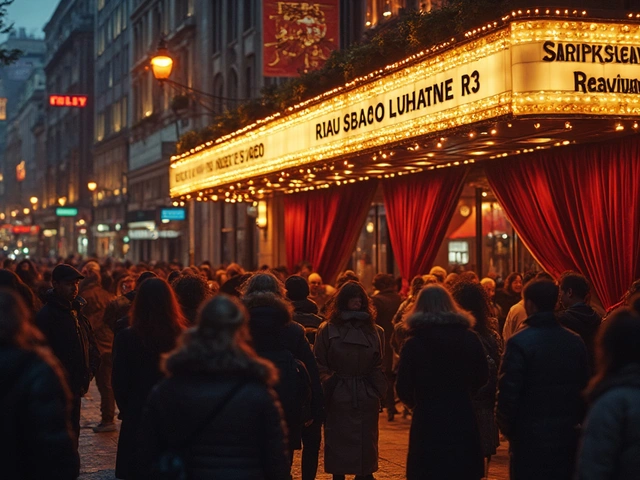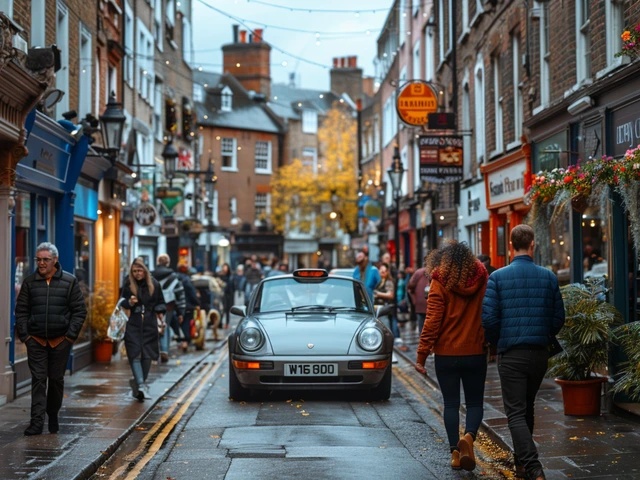Think theatre is all about new scripts and fresh talent? Guess again. Classic plays—think Shakespeare, Chekhov, Lorraine Hansberry—are getting packed houses after years of taking a back seat to world premieres. Ticket sales for big-name revivals sometimes even outnumber those for today's trendiest shows. Why does this keep happening? Well, classics hit a nerve. They shine a light on stuff we're still dealing with: power struggles, family drama, love, ambition. Suddenly, old scripts feel like they were written yesterday.
If you're curious about how directors keep these plays feeling fresh, you're not alone. It's not just about dusting off old costumes and hoping nostalgia will sell seats. Directors look for ways to connect the story to what’s happening now—think highlighting themes like inequality or using social media to bring younger crowds in. Even set designs get a modern twist, with more minimalist looks or bold, unexpected staging that grabs your attention right away.
- Why Classics Still Pack the House
- Nuts and Bolts: How Theatres Revive Old Plays
- What Modern Audiences Really Want
- Insider Tips for Enjoying a Revival Show
Why Classics Still Pack the House
There's a reason classic plays keep pulling in crowds, no matter how many flashy new shows open every year. People know what they're getting with tried-and-true stories—they've stood the test of time for a reason. When a theatre company puts up a revival, there's usually at least one of three things going on: nostalgia, relevance, and quality.
First up is nostalgia. Maybe you read these plays in school or saw them with your family. When something familiar is back on stage, it feels like a chance to reconnect. That's probably why the last Broadway revival of Arthur Miller’s "Death of a Salesman" in 2022 ended up making over $9 million in just a few months—people wanted to see a story they knew, done in a way that felt new.
But it’s not all just looking back. Classics like "A Raisin in the Sun" or "Romeo and Juliet" spotlight social issues that are, unfortunately, still big news today. Audiences keep showing up because the stuff these plays talk about—race, love, family pressure, power games—are still right here in real life. So it never feels outdated, even if the script was written 400 years ago. When the National Theatre in London staged "Hamlet" with Benedict Cumberbatch, over 100,000 tickets sold out within hours—proof that people crave a smart take on a well-known story.
One more reason classics keep winning? The writing is just solid. The way these scripts are built and the characters are drawn is hard to beat. It’s like why old songs stick around—they just hit right. Directors and actors love the challenge, and audiences get pulled in by the emotion and drama that never gets old.
| Play | Recent Revival Year | Tickets Sold |
|---|---|---|
| Death of a Salesman | 2022 | 90,000+ |
| Hamlet (London) | 2015 | 100,000+ (sold out first week) |
| A Raisin in the Sun | 2014 | 60,000+ |
The theatre world gets revved up by these stats. It’s not just about filling seats; it’s about making old stories matter right now. Classic revivals hit that sweet spot between comfort and surprise, which is why they aren't going anywhere soon.
Nuts and Bolts: How Theatres Revive Old Plays
Bringing a classic play back to life isn’t just about picking a script and hoping people show up. Theatres have a pretty specific process, mixing old-school respect with new ideas. No two revivals look the same, but the skeleton underneath is usually pretty familiar.
First, there’s a big decision: which play makes sense right now? Artistic directors pay close attention to current issues, anniversaries, or even what’s trending on social media. Weirdly enough, a ton of ticket sales for revivals pick up right after a topic in the play pops up in news cycles. Broadway’s 2022 revival of “Death of a Salesman” got a huge push after the pandemic made everyone rethink success and failure. Theatres took note—as you’d expect.
Then comes assembling the team. Directors dig for meaning, designers rethink the look, and casting decisions can flip an old story on its head. Lately, it’s common to see classic roles cast more diversely, giving new voices a shot. Did you catch “Hamlet” at London’s Globe with a female lead? That wasn’t just for buzz; it made the play click with new crowds.
Here’s a peek at the typical workflow:
- Script selection—balancing tradition with what feels urgent today
- Modernizing the setting, costumes, or dialogue (sometimes all three depending on the vision)
- Inclusive casting moves—diversity is more than a buzzword; it’s key to fresh appeal
- Rehearsals with heavy focus on drawing out new angles in the text
- Active marketing using social platforms to pull new audiences
If you think giving classics a modern twist is just some artsy trend, check out these numbers. After theatres introduced digital tickets and interactive talkbacks, average attendance for revivals bumped up noticeably.
| Year | Avg. Attendance per Performance (NYC Revivals) |
|---|---|
| 2019 | 440 |
| 2022 | 588 |
| 2024 | 635 |
The jump shows what happens when you mix classic writing with new tech and smart outreach. So if you think revivalism is just about recycling old stuff, think again. Theatres are doing heavy lifting to make these plays land—sometimes for the first time with whole new crowds.

What Modern Audiences Really Want
Theatre crowds are changing. In 2024, Broadway saw over 12 million people buy tickets, but the biggest shift wasn’t just numbers—it was who was sitting in those seats and what they expected. People want something that feels real, matters now, and lets them see themselves or their world on stage, even in old stories.
When choosing which classic shows to see, younger folks (18–35) say that a modern angle is a deal-breaker. According to a 2023 survey by The Theatre Communications Group, 64% of this group prefer productions that update the look, style, or message of the original. That means creative sets, hot topics, and sometimes even swapping traditional casting for more inclusive choices. Audiences love a fresh take, whether that’s a female Hamlet or A Raisin in the Sun set in today’s world.
Let’s lay out what crowds are looking for:
- Revivalism that connects: The show has to hit topics that matter—mental health, justice, or the messy stuff in families.
- Modern visuals: Expect neon lights, cell phones on stage, or actors in streetwear. Stuff that makes classics pop for TikTok and Instagram stories.
- Shorter runtimes and smart tech: People don’t want to spend four hours at the theatre. Post-pandemic, audiences love intermissions, live-streaming, or even voting on what happens next.
- More diversity everywhere: Modern theatre-goers want to see actors and stories that reflect their world. This means more roles for women, people of color, and LGBTQ+ folks.
Here’s a quick look at recent audience trends:
| Trend | 2018 | 2023 |
|---|---|---|
| Diversity in Audiences (% Non-White) | 21 | 34 |
| Interest in Modern Adaptations (%) | 41 | 67 |
| Prefer Inclusive Casting (%) | 36 | 58 |
In short, theatre isn’t just about reliving the past—people want to see something that feels fresh, pushes boundaries, and welcomes everyone. If a classic can do that, it still packs the house.
Insider Tips for Enjoying a Revival Show
Catching a classic on stage sounds easy, but getting the most out of a theatre revival takes a bit of know-how. First off, these shows can sell out fast, especially if it’s a famous play or has a big-name cast. Did you know the 2023 Broadway revival of "Death of a Salesman" sold out almost every weekend before it opened? If you want good seats, follow the theatre’s socials or join their mailing list. Some even run early bird presales or lotteries.
Don’t go in thinking it’s all about nostalgia. Most revivals tweak something about the original—could be the setting, costume design, or even the casting. If you’ve seen that classic before, don’t be surprised if the staging catches you off guard. Directors these days love flipping expectations. Want to get even more from the show? Scan the program notes or check the company’s website for a director’s note or “behind the scenes” clip. It gives you a peek at why they made certain choices.
- Bring a friend—even one who’s never seen the play. Chatting after can give you a new angle on what you saw.
- If you’re new to the story, skim a quick summary before you go. Some plots from the 1800s can get confusing, fast.
- Arrive a bit early. The best theatres display costumes, art, or panels about the show’s history in the lobby—worth checking out.
And here’s a pro move: some libraries offer discount tickets for local theatre shows. This includes classics. Even some high schools and community groups pull off top-notch revivals, often at a fraction of big-ticket prices. Don’t count out smaller venues—sometimes they take more risks with how the play is staged, making for a unique experience.





